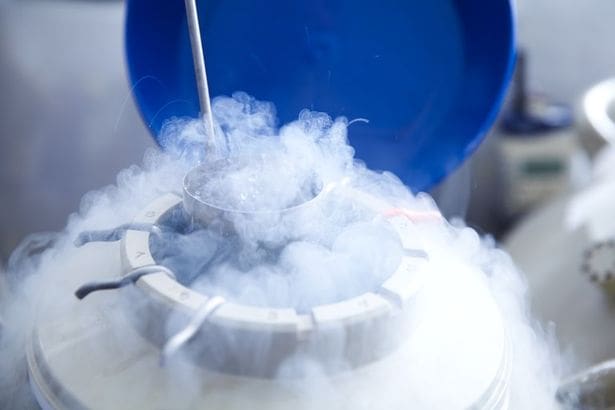Having your eggs frozen is an increasingly common thing among women wanting to preserve their fertility – but what is it? And is it successful?
For women, egg freezing is a great way to preserve fertility if they’re planning on having children one day, but not any time soon.
Love Island star Amy Hart recently spoke out about her plans to freeze her eggs, saying: “I’ve always planned to freeze my eggs next year and when asked who I’d freeze them with I said well probably one of my best friends. “I’m not having a baby any time soon, it’s just a precautionary measure just in case.”
“I’ve had so many friends who thought: ‘Oh it’s fine I’ll just fall pregnant straight away,’ and then haven’t. And you never know, I might not need the eggs but I’m just doing it in case I don’t meet someone but I might meet someone.”
Despite egg freezing becoming increasingly popular, there’s often confusion around what it involves and just how much it costs.
Dr Larisa Corda is a leading obstetrician and gynaecologist and fertility expert and she told OK! online everything you need to know about the process.
What is egg freezing?
“Traditionally developed to preserve fertility for women undergoing cancer treatment and earlier menopause, egg freezing has also increasingly become a social choice for many women, aware of their own biological clock and wishing to give themselves the best chance of being able to have a child later in life.
This wave of reproductive empowerment and freedom means that women can finally take a degree of control over their own fertility, in a similar way that the pill initially allowed when it was first introduced.”
What does freezing your eggs involve?
“Egg freezing involves the same principles as IVF, that means your ovaries are stimulated with injections that will make them produce several eggs in one go. When these are mature, they are collected via a short operative procedure that involves using a needle into the vagina and then the ovaries, to aspirate and collect all of the eggs.
“These are then frozen and preserved for use later on, when they are thawed, fertilised and used to create embryos that can then be used for implantation. The duration of stimulation varies depending on your response and is different for everyone, but on average takes between a few days to two weeks.
“During this time you are monitored with blood tests and scans and encouraged to keep well hydrated, maintaining a healthy lifestyle and avoiding over vigorous exercise due to the ovaries swelling in size.”
Image: Getty





